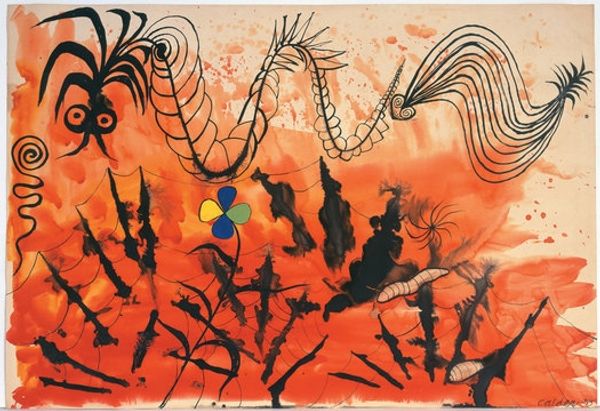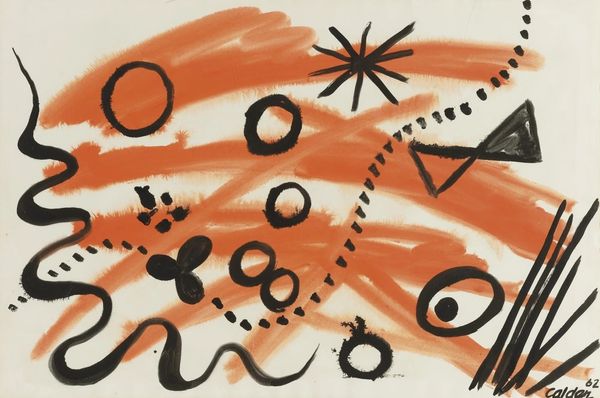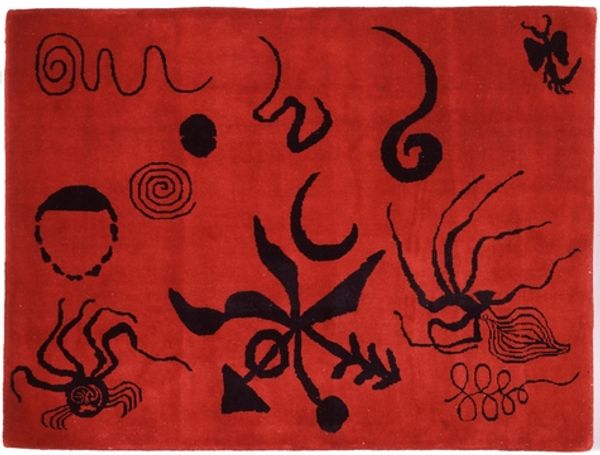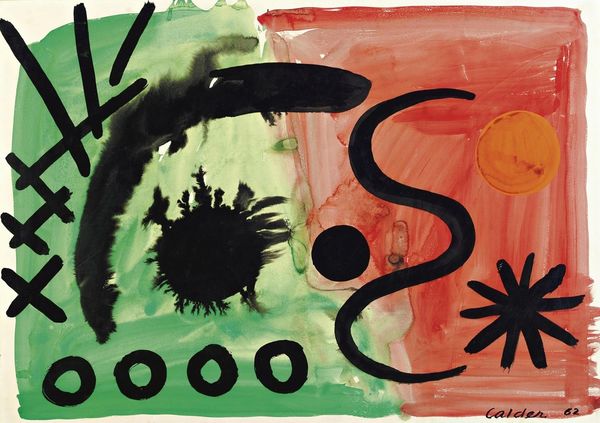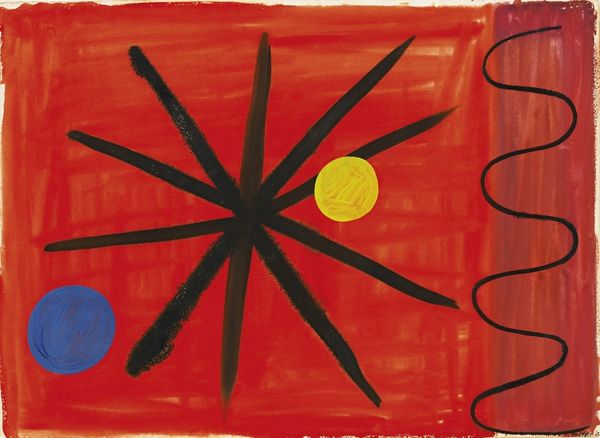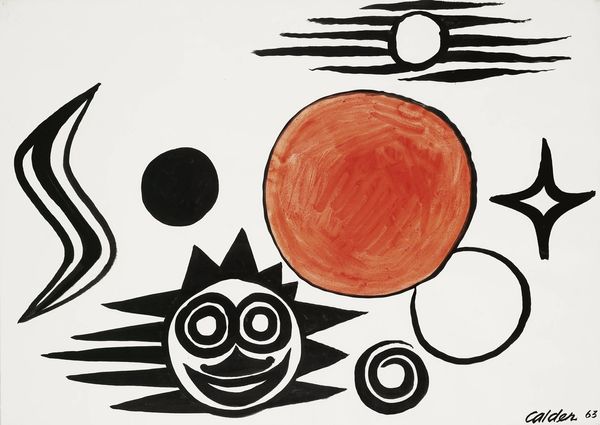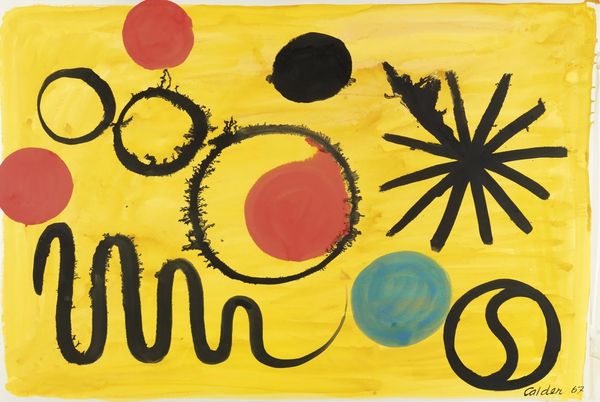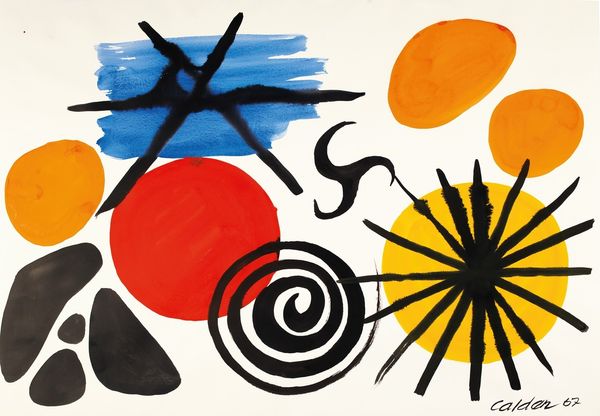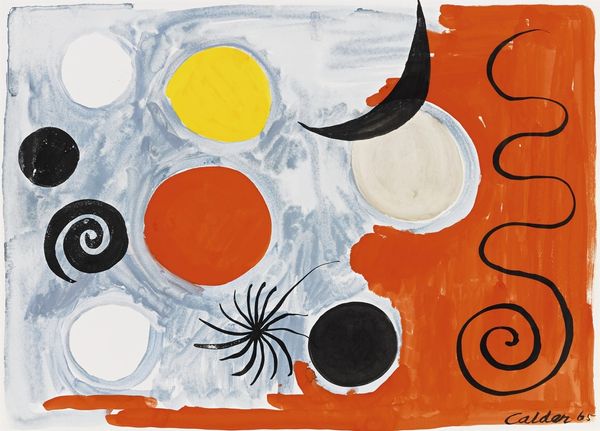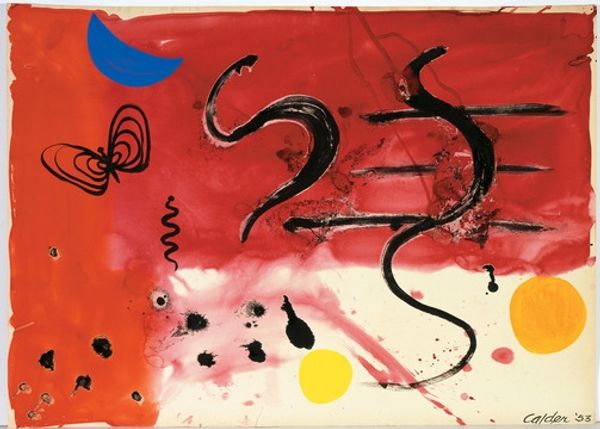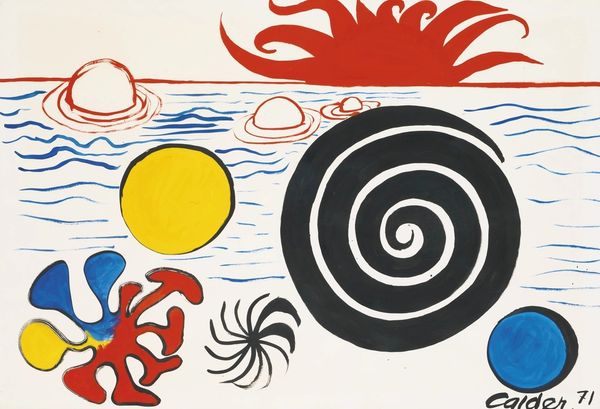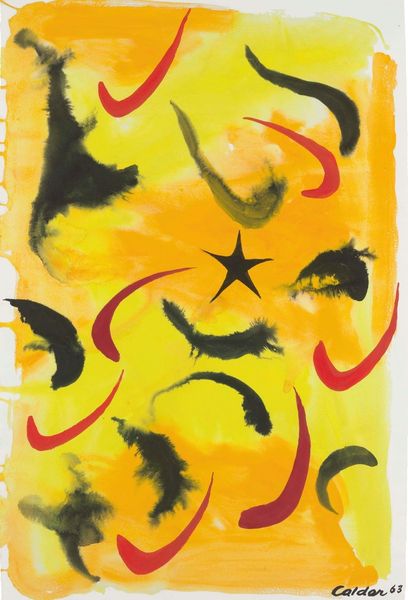
drawing, acrylic-paint
#
drawing
#
acrylic-paint
#
abstract
#
form
#
geometric
#
geometric-abstraction
#
line
#
watercolour illustration
#
modernism
Copyright: Modern Artists: Artvee
Editor: This is Alexander Calder's "Three Black Stars," made in 1963 using acrylic paint and drawing techniques. It's got a playful, almost childlike quality to it, with its simple shapes and vibrant colors. What’s your take on this work? Curator: I think that “playful” is a good entry point. Calder's work, especially in the 60s, exists within a larger movement pushing back against the austerity of earlier modernist abstraction. Consider the socio-political context: the Cold War, anxieties about nuclear proliferation, alongside burgeoning youth culture and the space race. Does this image reflect that in any way, do you think? Editor: It feels less like anxiety and more like escape, maybe? A simplified universe of symbols? Curator: Precisely! It uses universal symbols, stars, moons, spirals... rendered in a deliberately casual way. What effect do you think that has? Remember, this isn’t high-art seriousness we are seeing here. It mirrors a democratization of art happening at the time, art becoming more accessible, more aligned with popular culture. Editor: So, the looseness and simple imagery makes the art approachable? Almost like Calder is resisting the elite art world. Curator: It's not a full rejection but a negotiation. Calder still shows in galleries and museums, he's a known name. But he’s challenging the perceived boundaries of "high" art by incorporating playful elements. Think about how Pop Art was exploding around the same time; there's a similar desire to engage a wider audience. What are your thoughts about how institutions show a piece like this now? Editor: Well, knowing that makes me look at this drawing differently now. I see it less as just a fun picture and more of a statement about art’s place in culture. Thank you for your analysis! Curator: My pleasure! It’s a constant process, reassessing how art reflects and shapes society.
Comments
No comments
Be the first to comment and join the conversation on the ultimate creative platform.
